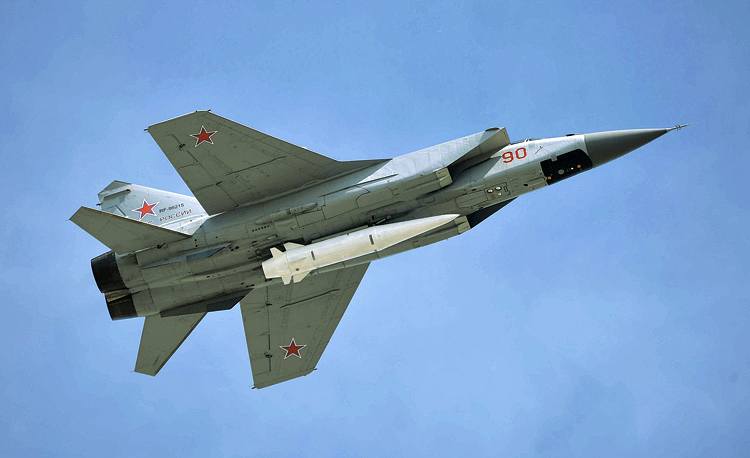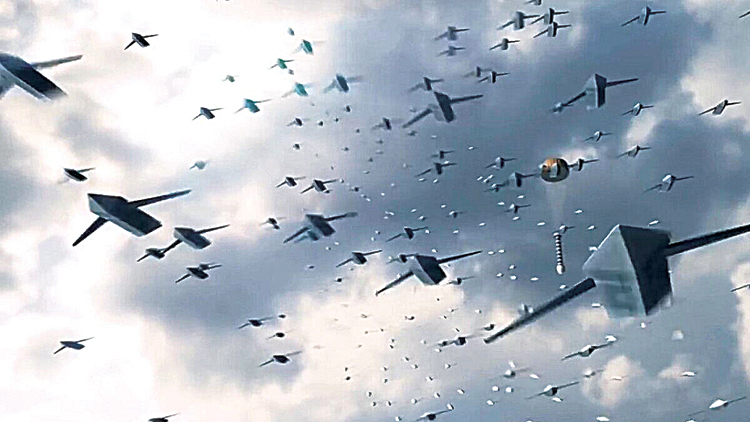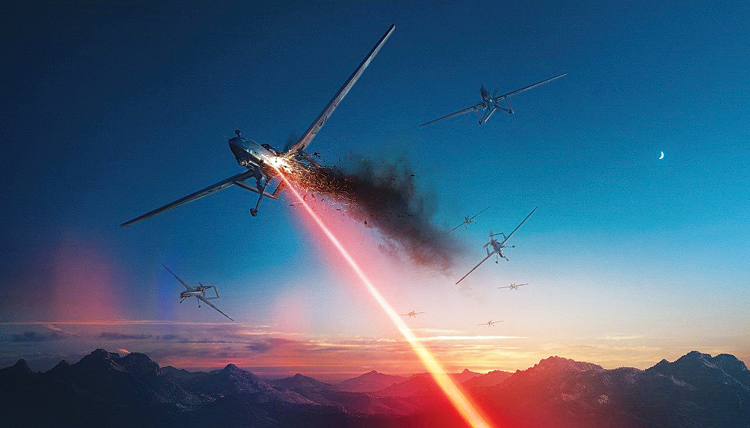INDIAN ARMED FORCES CHIEFS ON OUR RELENTLESS AND FOCUSED PUBLISHING EFFORTS

The insightful articles, inspiring narrations and analytical perspectives presented by the Editorial Team, establish an alluring connect with the reader. My compliments and best wishes to SP Guide Publications.

"Over the past 60 years, the growth of SP Guide Publications has mirrored the rising stature of Indian Navy. Its well-researched and informative magazines on Defence and Aerospace sector have served to shape an educated opinion of our military personnel, policy makers and the public alike. I wish SP's Publication team continued success, fair winds and following seas in all future endeavour!"

Since, its inception in 1964, SP Guide Publications has consistently demonstrated commitment to high-quality journalism in the aerospace and defence sectors, earning a well-deserved reputation as Asia's largest media house in this domain. I wish SP Guide Publications continued success in its pursuit of excellence.
Futuristic Weaponry to the Fore
While the true capability of hypersonic missiles and other futuristic weapons technologies may currently lag the hype there is no reason to believe it will always be so

If you thought the world’s major nations were busy fighting the COVID-19 pandemic or climate change these past few years, think again. Behind the scenes they have been embroiled in some deadly new arms races – ranging from hypersonic weapons to autonomous drone swarms to directedenergy weapons (DEW). And perhaps many more. These races are even more fast and furious than the 20th century rivalries featuring nuclear, biological and chemical (NBC) weapons. At that time thankfully saner counsel prevailed. World leaders realised that weapons of mass destruction (WMD) could threaten the very survival of humanity, and they were controlled to some extent by international treaties and agreements. But it is hard to see how the current contests can be curbed.
Some futuristic weapons are still in the concept stage or in early development, while others are already deployed or are nearing maturity. Here we will consider three new types of weapons that have been used in combat or are close to that stage.
- Hypersonic Missiles: Missiles that can fly long distances at greater than five times the speed of sound (Mach 5) while retaining the ability to manoeuvre during the entire flight trajectory.
- Drone Swarms: Large numbers of unmanned aerial vehicles (UAV) dispatched simultaneously for a variety of missions, such as surveillance, bombing, or electronic warfare. Drone swarms are growing increasingly autonomous or capable of operating without human intervention.
- Directed-Energy Weapons (DEW): Potentially very powerfuland accurate weapons that generate a focused beam of electromagnetic energy to degrade, damage or destroy targets.
HOMING IN ON HYPERSONICS
Hypersonic flight presents a number of technological challenges due to the extreme frictional heat generated. Manoeuvring is difficult and even gentle turns consume much of the missile’s kinetic energy and slow it down. There are two main types of hypersonic missiles:
- Hypersonic glide vehicles (HGV) or hypersonic boost-glide missiles are launched and accelerated to hypersonic speeds by rockets, then glide hypersonically towards the target. HGVs have already been used in conflict.
- Hypersonic cruise missiles (HCM) use their own engine power to maintain hypersonic speeds. They are powered by scramjets (supersonic combustion ramjets) that have no moving parts, but burn fuel in a stream of supersonic air compressed by the forward speed of the missile.
Speed alone is not what makes hypersonic weapons deadly. It is their peculiar trajectory that renders them difficult to detect and their ability to manoeuvre that makes them near impossible to intercept. They can evade most sensors currently used to track ballistic missiles, as well as the interceptor missiles deployed to destroy them. Even if the launch of a hypersonic missile were detected, it would then fly outside the line-of-sight envelope of terrestrial radars and provide even advanced defensive systems inadequate reaction time. This could destabilise nuclear deterrence.

Russia was the first nation to field an operational hypersonic missile in 2019 with Avangard, an HGV with a claimed 6,000 km range. China followed suit in 2020 with the Dongfeng-17, an HGV with a range of 1,800 to 2,500 km. Russia is also developing the Zircon scramjet-powered, submarine-launched anti-ship HCM and several other types of hypersonic weapons. North Korea has tested the Hwasong-8, a short-range ballistic missile, claimed to include a hypersonic manoeuvrable re-entry vehicle. The United States has several hypersonic missile development programmes running concurrently and is expected to deploy its own HGVs in the near future.
In March 2022, Russia became the first country to use a hypersonic weapon in combat when it launched its Kinzhal (dagger) missile with a speed of Mach 10 and a payload of 480 kg to strike an arms depot in Ukraine. However, military analysts believe that Kinzhal is actually an air-launched ballistic missile (a technology that is decades old). It is not really manoeuvrable in hypersonic flight and hence does not meet the definition of an HGV.
China’s fascination with hypersonic missiles probably lies more in their use for conventional warfighting than for an allout nuclear attack. For instance, a US aircraft carrier off Taiwan could be a juicy target for a Chinese hypersonic missile. If China were to build a sizeable arsenal of such weapons it would, to some extent, neutralise the significant lead the US currently enjoys in military power.
With China running a very ambitious hypersonic missile development programme, India cannot afford to be complacent. The Defence Research and Development Organisation (DRDO) is currently testing its scramjet-powered Hypersonic Technology Demonstrator Vehicle (HSTDV). However, the Indian Air Force’s main hopes of fielding a hypersonic weapon rest on an upgrade of the BrahMos medium range, supersonic cruise missile. BrahMos Aerospace is striving to produce the BrahMos-2 hypersonic missile, modelled on Russia’s Zircon that can fly at Mach 9. According to BrahMos Aerospace, once Indian government approval is accorded, it will take eight years before BrahMos-2 is ready for trials.
DEFENDING THE INDEFENSIBLE?
Hypersonic missiles are difficult to intercept and can deliver a devastating payload. For the US, the most worrisome prospect is that low-flying HCMs – possibly nuclear tipped – could evade even its sophisticated early warning system. The US might be blind to a missile attack and its ability to respond significantly constrained. Even if the detection problem were somehow solved, the Patriot Advanced Capability (PAC-3) system and the Standard Missile-6 (SM-6) are the main arrows America’s quiver. However, their effectiveness against manoeuvring hypersonic targets is limited. And such defensive missiles are costly – around $5 million per SM-6 – making their widespread use prohibitively expensive.
Lasers as defensive systems are superior to projectile weapons, having the advantages of instantaneous hits, pinpoint accuracy, scalable power requirements and negligible cost per shot. However, they also have huge energy requirements, get attenuated over distance and are susceptible to adverse weather conditions. Besides, very high-powered lasers are required to neutralise hypersonic missiles and such lasers currently do not exist. Another possibility would be high-powered radiation that could disrupt the missile’s radar guidance and navigation systems, and deflect it from its intended path. For nations with space warfare capability, anti-satellite weapons could be used to knock out the enemy’s military satellites essential for targeting, tracking and guidance of the hypersonic missiles. And the old maxim, “the best defence is a good offence” also applies – in other words, a strong deterrent. If India is known to have viable hypersonic weapons it would probably deter adversaries from using them against the country for fear of massive retaliation in kind.
SWARM DRONES
Russia’s war in Ukraine has turned the spotlight on various futuristic weapon technologies. With innovation happening at lightning speed, the conflict has become an ideal testing ground for emerging military systems. Military analysts are calling this the first commercial space war, the first full-scale drone war, and the first artificial intelligence (AI) war.
In fact, drones of all shapes and sizes crisscross Ukraine’s skies on a 24x7 basis. Never before have so many been deployed in conflict. Many drones were originally designed for commercial purposes or for hobbyists – cheap, simple to use and even dispensable. They fly low and slow, and can be easily destroyed with the right weapons. However, it often means that an expensive missile is used to destroy a cheap drone. In October 2022, Ukraine claimed it was shooting down 70 per cent or more of Russian Shahed loitering drones, procured from Iran, but the drones that got through were enough to incapacitate Ukraine’s electrical grid.
A drone swarm is a group of UAVs which cooperate with each other using advanced autonomy, communication and AI protocols to execute various mission objectives with minimal human intervention. They are inherently self-organising to ensure collision avoidance between one another and obstacle avoidance. All members in a swarm contribute to collective decision-making, adaptive formation flying, and self-healing, thus obviating the need for a unique leader. Drone swarms move in groups perhaps widely dispersed at first, hiding from radar, only to converge on the designated target at the last minute. The swarm can react to threats without human intervention – changing course, speed, or altitude and manoeuvring around heavily protected air space – and can absorb huge losses without being deterred.

Massed drone attacks are extremely difficult to tackle with conventional weaponry and the defenders can usually be overwhelmed. This has been evident in the high density Ukrainian drone attacks that successfully breached Russian defences and destroyed fuel and ammunition dumps. True swarm drones offer an even higher value of return and with bright chances of target saturation and mission success.
Several countries across the globe are actively pursuing swarm drone programmes. Veda Defense System, a New Delhibased start-up, has reportedly won an order to make 200 longrange swarm drones costing 300 crore for the IAF. Expected to be ready for induction in 12 months, the UAVs will have a range of about 150 km. These kamikaze drones can be launched in small batches but coalesce when airborne to attack or defend targets.
AWAITING DEW
High-power lasers (HPL) and high-power microwaves (HPM) have emerged as the two main branches of DEW technology. Unlike kinetic munitions, DEWs operate at the speed of light, enabling rapid engagement and a virtually unlimited magazine. Their main drawback at present is that they are too low-powered to take out aircraft or large missiles. But they can be gainfully employed against small low-tech, low-lethality drones. In fact they may be the only viable response against swarms of small drones. They are perhaps also the only practical defence against a hypersonic missile attack.
In the development of DEW systems in India, it is the Defence Research and Development Organisation (DRDO) and its adjunct, the Hyderabad-based Centre for High Energy Systems and Sciences (CHESS) that play a key role. There are reports of considerable progress. However, a practicable offensive or defensive weapon suitable for the IAF is yet to be deployed.
HYPE HELPS
Over the next few years, hypersonic missiles, drone swarms and DEWs are likely to proliferate globally and perhaps overshadow conventional weaponry to some extent. Therefore, another race is simultaneously picking up speed – to develop effective sensors and defences against these revolutionary weapons. Each passing day also brings new advances in AI, and despite dire warnings of the threat AI could pose to humanity, it is already in use for military purposes. AI can guide missiles and control swarms of drones, keeping humans entirely out of the loop. Most likely it is also being employed to develop new types of fully autonomous weapons.
Some analysts believe that Russia and China could be considerably exaggerating their hypersonic prowess and the capability of their futuristic weaponry. Both nations have a history of doing so. It is a game the US Department of Defense is willing to play along with because unless US lawmakers are sufficiently alarmed by the perceived threat they are unlikely to approve the huge funds necessary to develop and produce such weaponry. Some analysts also believe that although the military effectiveness of hypersonic missiles is not significantly more than that of conventional missiles, their advantage is that hypersonic weaponry has a certain psychological and propaganda effect, or can inspire terror. Still, for at least two or three decades, hypersonic missiles will remain extremely expensive, so even countries with enormous military budgets like the US and China will have to content themselves with small arsenals. In fact, Russia may soon run out of its hypersonic missiles.
War has a way of pitilessly exposing shortcomings and demolishing tall claims. In March 2023, when Russia launched a coordinated aerial attack over Ukraine, five out of six of its Kinzhal hypersonic missiles were ostensibly destroyed by Ukraine using US-supplied Patriot missile systems. But while the true capability of hypersonic missiles and other futuristic weapons technologies may currently lag the hype there is no reason to believe it will always be so. India therefore has no choice but to accelerate the development of its own arsenal of futuristic weapons, as well as defensive systems against such attacks.





